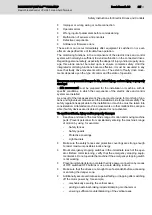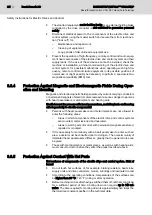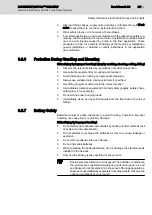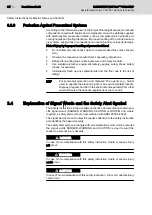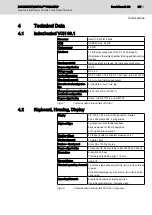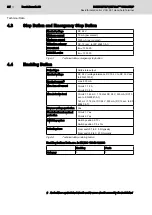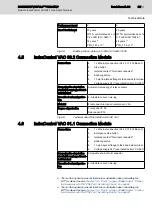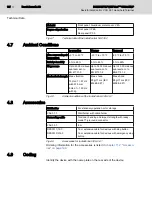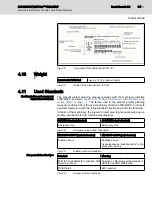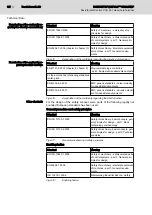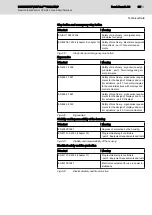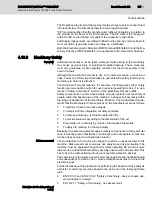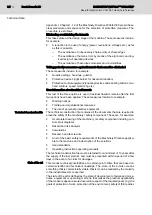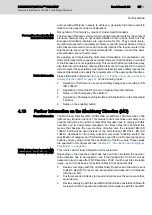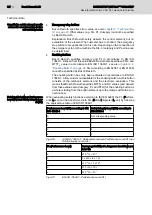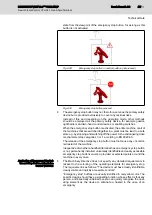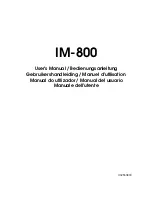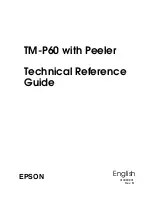
The Directives are aimed at the member states, whose task is to convert them
into national law. The Directives therefore have legal character.
"CE" marking certifies that the manufacturer fulfils all obligations in relation to
the product on the basis of the EC Directives. The CE mark is the "passport"
within the EC and is defined on behalf of the supervisory authorities.
Additionally independent, accredited notified bodies can be commissioned to
carry out an EC type-examination and draw up a certificate.
Both the Electromagnectic Directive (EMC Directive 89/336/EEC) and the Ma‐
chinery Directive (MD 2006/42/EC) are applicable to the Hand-held Terminal.
4.12.3
Machinery Safety
Overview
Additional measures must be taken wherever faults arising in the machinery
may cause personal injury or significant material damage. These measures
must also guarantee a safe operating condition for the whole system in the
event of a fault.
Although the Hand-held Terminal is not, in the narrower sense, a machine, it
does, however, perform important tasks to guarantee the safety functions of a
machinery to which it is attached.
The Hand-held Terminal features, for example, the "Emergency Stop" safety
function and an enabling button for use in special operating modes. It is, as a
result, a "Safety Component" in terms of the Machinery Directive (MD).
Safety components, or parts whose failure or faulty operation put the safety of
people within the hazard area of the machine in danger, fall expressly within
the range of application of the Machinery Directive. The fundamental require‐
ments that the Machinery Directive places on the manufacturer are as follows:
●
To perform a hazard and risk analysis
●
To comply with the integration of safety principles
●
To compile and keep a technical construction file
●
To provide solutions according to the latest state of the art
●
Presumption of conformity by means of harmonised Standards
●
To apply CE marking (on the type plate)
Basically, the same requirements apply to safety components. In their particular
case, it must be proven that failure or malfunction are not possible, or that mal‐
function does not lead to a hazardous situation.
Risk assessment
The manufacturer of a machine is obliged to perform a risk assessment of its
machine. Risk assessment comprises risk analysis and risk evaluation. The
machine must be analysed throughout its whole operating life and in all oper‐
ation modes, and all hazards that may possibly arise must be documented. This
has to be done without taking into account possible protection devices.
The next step is to formulate a goal for protection against each identified hazard
and subsequently to define one or more protective measures to achieve the
protection goal.
Further details about the procedure for performing the hazard and risk analysis
and lists of commonly occurring hazards can be found in the following Stand‐
ards:
●
EN 12100-1 and EN 12100-2: "Safety of machinery - basic concepts, gen‐
eral principles for design"
●
EN 14121-1 "Safety of machinery - risk assessment"
Principles for the integration of
safety
DOK-SUPPL*-VCH*08.1***-PR02-EN-P
Rexroth IndraControl VCH 08.1 Hand-held Terminal
Bosch Rexroth AG
35/117
Technical Data

